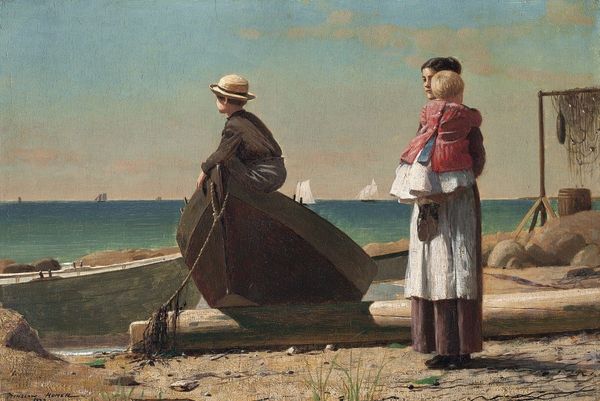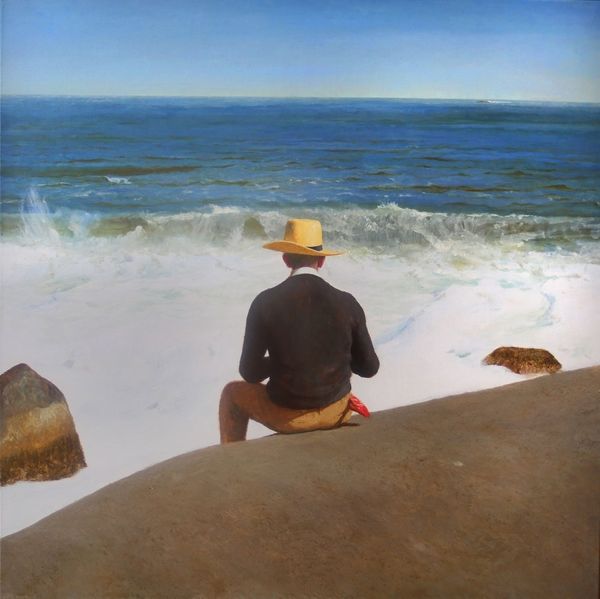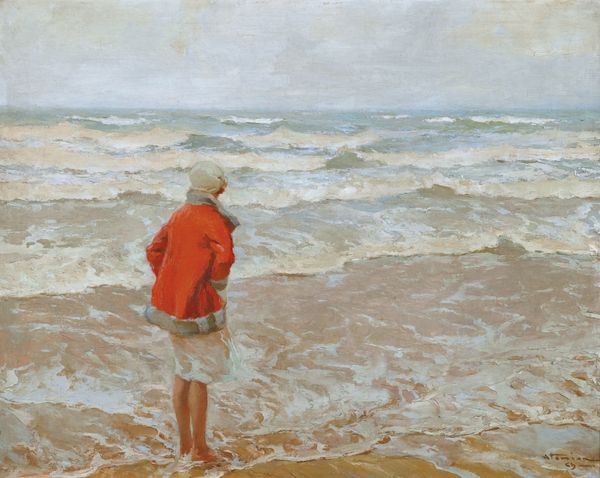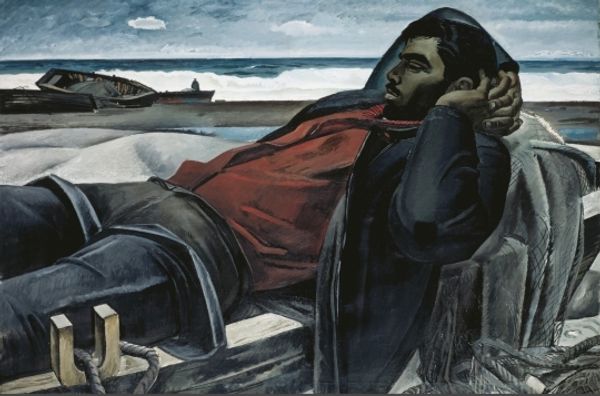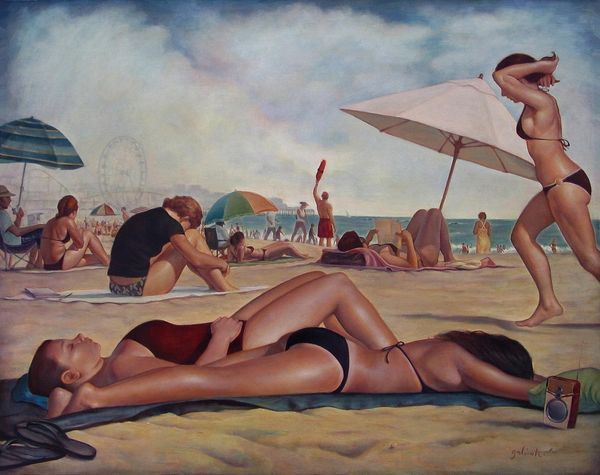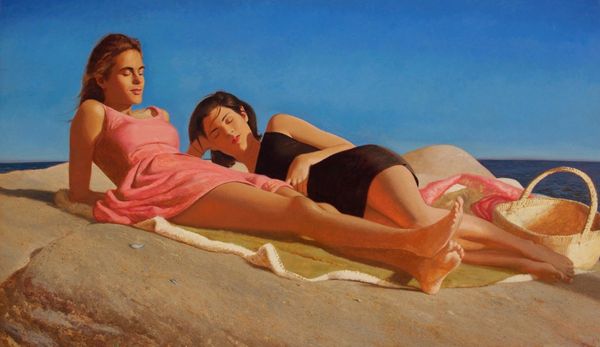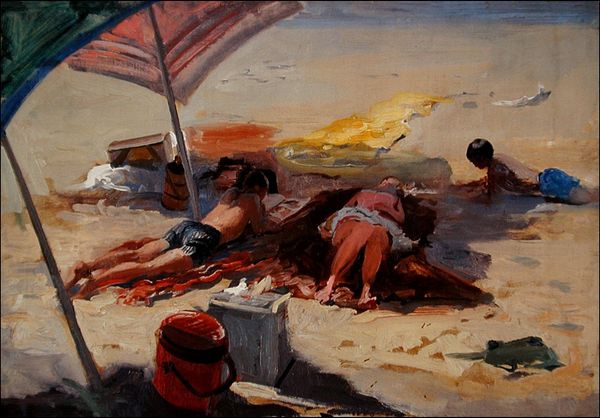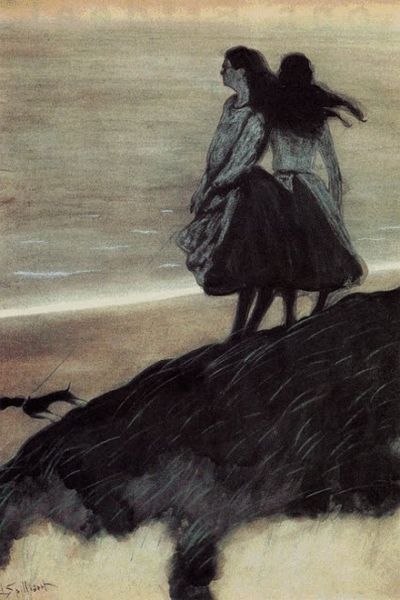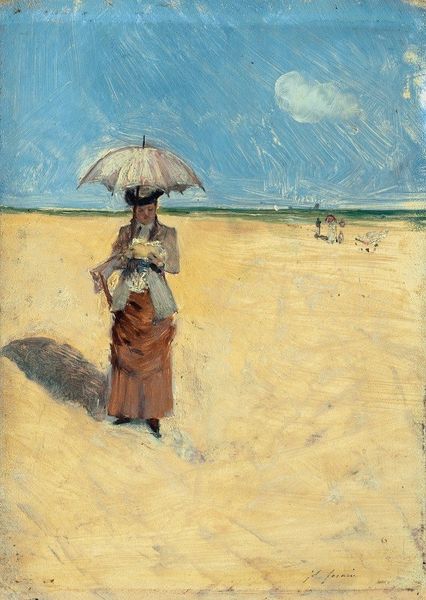
painting, oil-paint
#
painting
#
oil-paint
#
landscape
#
caricature
#
figuration
#
naive art
#
surrealism
#
human
#
genre-painting
#
surrealism
#
modernism
Copyright: Jose Manuel Capuletti,Fair Use
Editor: This is "Dama en la playa," or "Lady on the Beach," painted in 1953 by Jose Manuel Capuletti. It's an oil painting depicting a woman with her back to us, gazing out at the sea. There's something melancholic, almost surreal, about the scene. What catches your eye in this work? Curator: Well, beyond the overt Surrealist elements, I'm drawn to the social commentary embedded within. This painting was created in the post-war era. How does the lone figure of the woman resonate with broader discussions about gender roles and societal expectations of women in that period? Editor: That's an interesting point! I hadn't considered that. It's almost as if she is confronting a vast, uncertain future alone. Curator: Exactly. Consider the shoes cast aside and the handkerchief abandoned. What does this suggest about the performative aspects of femininity, and perhaps a rejection of those constraints? The beach, a public space, becomes a stage. Editor: So you see this not just as a personal reflection, but also as a reflection of women's evolving role in society at the time? Curator: Precisely. The Surrealist style isn’t merely an aesthetic choice, but a vehicle to explore anxieties and question social norms. It's using a dreamlike space to talk about real-world constraints. Are the trees on the sea another world ready to grow into ours? Editor: I see it so much clearer now; it makes me think differently about Surrealism in general. It's like the personal is political through the lens of dreams! Curator: Indeed! And art like this shows us how powerful imagery can be in shaping, and challenging, our understanding of history.
Comments
No comments
Be the first to comment and join the conversation on the ultimate creative platform.

